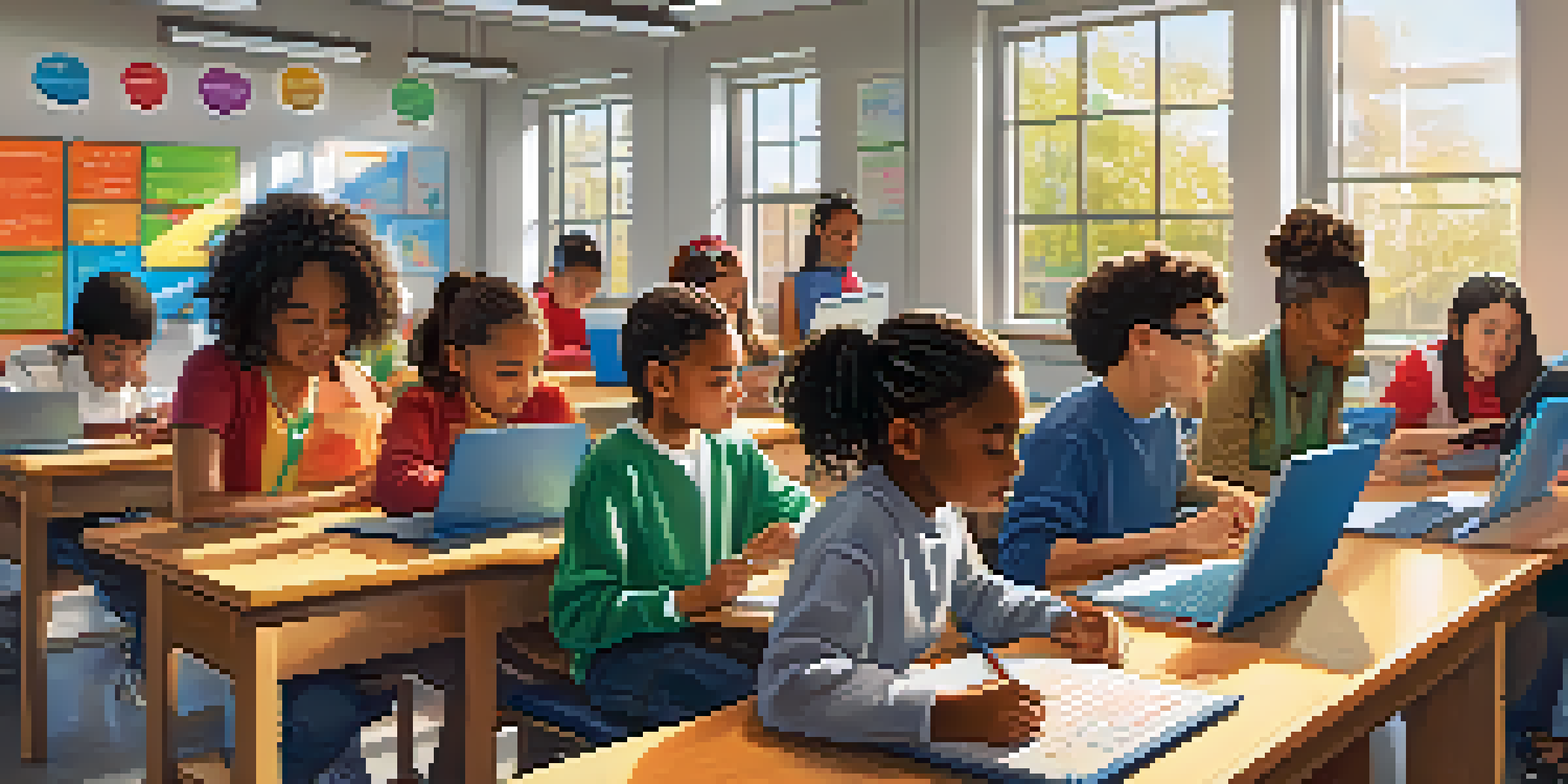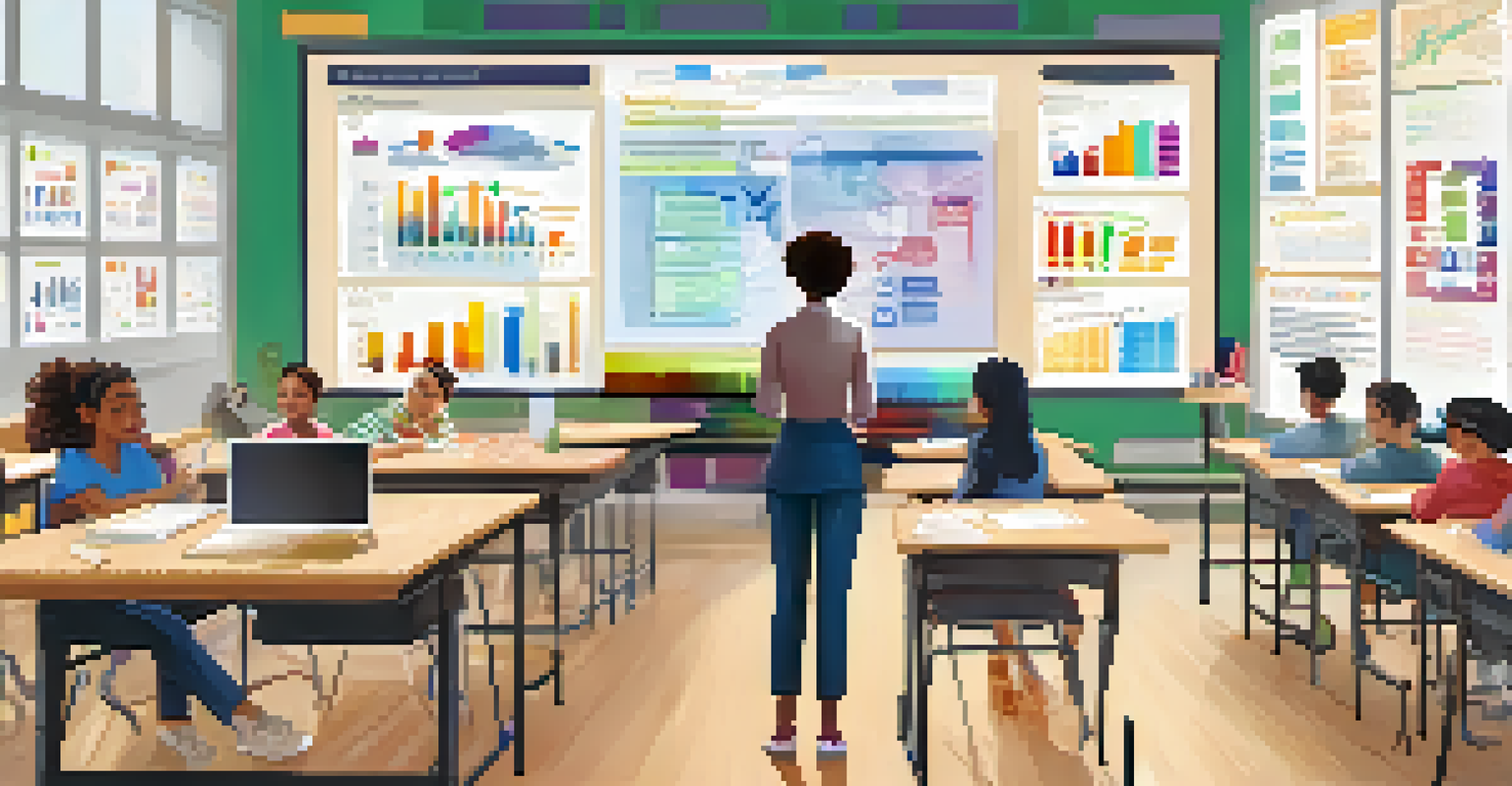Adaptive Learning Technologies: A Review of Current Innovations

Understanding Adaptive Learning Technologies in Education
Adaptive learning technologies are systems designed to tailor educational experiences to individual learner needs. By utilizing algorithms and data analytics, these technologies adjust the content, pace, and approach based on a student's performance and preferences. Imagine a personal tutor that learns your strengths and weaknesses over time, creating a unique learning path just for you.
Education is not the filling of a pail, but the lighting of a fire.
The goal is to enhance engagement and improve outcomes by making learning more personalized and relevant. This is particularly important in diverse classrooms where students have varying levels of understanding and different learning styles. For instance, a student struggling with algebra can receive targeted exercises, while a peer excelling in the subject can progress to advanced topics.
As we delve deeper into the realm of adaptive learning, it becomes clear that these technologies are not just about customization. They are about fostering a more effective and inclusive educational environment that empowers all students to thrive.
Key Innovations Driving Adaptive Learning Forward
Recent innovations in adaptive learning technologies have significantly transformed the educational landscape. One notable advancement is the use of artificial intelligence (AI) to analyze student data in real-time. This means that as learners engage with the material, the system can immediately adapt, offering additional resources or adjusting difficulty levels when necessary.

Another exciting development is the integration of gamification elements, which can enhance motivation and engagement. By incorporating game-like features such as points, badges, or leaderboards, adaptive learning platforms encourage students to take an active role in their education, making learning not just effective, but also fun.
Personalized Learning Enhances Engagement
Adaptive learning technologies tailor educational experiences to individual needs, improving student engagement and outcomes.
Moreover, advancements in mobile technology have allowed adaptive learning solutions to be more accessible than ever. Students can now learn on-the-go, with platforms that adjust to their progress, whether they are at home or commuting. This flexibility is critical in today’s fast-paced world, where time is often limited.
The Role of Data Analytics in Personalized Learning
Data analytics is at the heart of adaptive learning technologies, driving insights that inform personalized education. By collecting and analyzing data on student interactions, preferences, and performance, these systems can identify patterns and predict future learning behaviors. This level of insight allows educators to make informed decisions that can lead to better teaching strategies.
The future of education is not about technology, it's about the individualization of learning.
For example, if a significant number of students struggle with a particular concept, educators can quickly adjust their lesson plans or provide additional resources. This proactive approach helps to prevent students from falling behind and ensures that they receive the support they need when they need it.
Ultimately, leveraging data analytics not only benefits students but also empowers educators. With a clearer understanding of student progress, teachers can tailor their instruction to meet the diverse needs within their classrooms, creating a more effective learning environment overall.
Challenges in Implementing Adaptive Learning Technologies
While adaptive learning technologies hold great promise, their implementation is not without challenges. One major hurdle is the digital divide; not all students have equal access to technology, which can exacerbate existing inequalities in education. Ensuring that all students have the necessary tools is essential for the success of adaptive learning initiatives.
Furthermore, there can be resistance from educators who may feel overwhelmed by the rapid pace of technological change. Some teachers might be hesitant to adopt new systems, fearing that they will complicate their teaching rather than enhance it. Providing adequate training and support is crucial to alleviate these concerns and foster a culture of innovation.
Data Analytics Drives Instructional Change
Utilizing data analytics allows educators to identify student patterns and adapt teaching strategies for better learning.
Lastly, data privacy and security remain significant concerns. As adaptive learning technologies collect and analyze vast amounts of student data, ensuring that this information is protected and used ethically is paramount. Educators and tech developers must collaborate to create systems that prioritize student privacy while still delivering personalized learning experiences.
Case Studies: Successful Adaptive Learning Implementations
Several educational institutions have successfully integrated adaptive learning technologies, showcasing their potential benefits. For instance, a prominent university introduced an adaptive learning platform for their introductory math courses, resulting in improved student engagement and a notable increase in pass rates. This case highlights how tailored support can lead to better educational outcomes.
Another example includes a K-12 school district that implemented adaptive reading programs. By using data analytics to identify struggling readers, teachers were able to provide targeted interventions, significantly improving literacy rates among students. This demonstrates the power of adaptive learning in addressing specific skill gaps in real-time.
These success stories serve as valuable lessons for other institutions looking to adopt similar technologies. They highlight the importance of ongoing evaluation and adaptation, ensuring that the systems in place continue to meet the changing needs of students.
The Future of Adaptive Learning: Trends to Watch
As we look to the future, several trends are emerging in the realm of adaptive learning technologies. One key trend is the growing focus on social-emotional learning (SEL), which emphasizes the importance of emotional intelligence and interpersonal skills in education. Adaptive learning platforms are beginning to incorporate SEL components, helping students to develop these critical skills alongside academic knowledge.
Another trend is the increasing use of virtual and augmented reality (VR and AR) to create immersive learning experiences. By integrating these technologies, educators can offer students unique opportunities to engage with content in ways that were previously unimaginable. For instance, a history lesson could come to life through an AR experience that transports students to ancient civilizations.
Challenges Must Be Addressed for Success
Implementing adaptive learning technologies requires overcoming access, training, and data privacy challenges to ensure equitable education.
Finally, the rise of collaborative learning environments is also shaping the future of adaptive learning. As students work together on projects, adaptive technologies can facilitate group dynamics by recognizing individual contributions and adjusting tasks accordingly. This not only promotes teamwork but also ensures that each student can learn at their own pace.
Conclusion: Embracing the Adaptive Learning Revolution
Adaptive learning technologies are revolutionizing the way we approach education, offering personalized experiences that cater to individual needs. As we’ve explored, these innovations not only enhance student engagement but also empower educators to make data-driven decisions. The potential for improved outcomes is immense, but it requires commitment from all stakeholders in the educational landscape.
By addressing challenges such as access, training, and data privacy, we can create a more equitable and effective learning environment for all students. It is crucial to foster a culture of collaboration among educators, technologists, and policy-makers to ensure that adaptive learning technologies are implemented thoughtfully and responsibly.

As we stand on the brink of this educational revolution, embracing adaptive learning technologies can lead to a brighter future, where every learner has the opportunity to succeed. The path ahead may be complex, but the rewards—personalized education that meets the needs of every student—are well worth the journey.